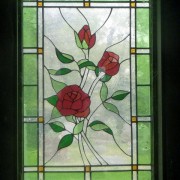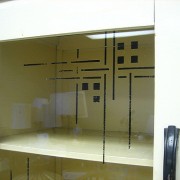Low-e glass: what is it?
Low-emissivity (or low-e) glass is a specially coated glass that is designed to reduce energy losses. Normally glass isn’t a good insulator. Ordinary glass has an “R-value” of about 3. It’s slightly better than a dead air space, but not by much!
When we think about light, we naturally think about visible light. It’s easy to forget that the “full” light spectrum contains wavelengths that our eyes can’t see. Two types of light frequencies that aren’t visible are ultraviolet (UV) light and infrared (IR) light.
We can’t see ultraviolet light with our eyes, but we can certainly see what it does. UV light is responsible for fading colors on fabrics and paints, and changing the color of plastics.
We also can’t see infrared light, but we can feel its effects. IR light is responsible for heating things up. Different materials retain different amounts of heat. The heated objects then radiate heat out to the rest of the room. This kind of heat radiation is called emissivity. Glass, like any other physical object, can also radiate this energy.
That’s not very helpful, because glass can cause a space to gain or lose heat. In the middle of winter, it’s hard to turn down “free heat” but the angle of the winter sun doesn’t provide nearly as much “free heat” as the summer sun does. That means that windows tend to lose heat in the winter (and at night), and gain heat in the summer. This pattern means that we spend a lot more on heat in the winter, and air conditioning (or other ventilation) in the summer.
Highly reflective (light colored) surfaces have a low emissivity, while dark-colored surfaces have a high emissivity. That means that reflective glass loses less energy than non-reflective glass does.
Low-e glass has a microscopically thin, reflective transparent coating that’s designed to reject changes in heat energy. It prevents extra heat from coming in the building, but it also prevents heat from leaving the building. It is designed to save energy. Low emissivity glass is as much as 40 times better at retaining heat than ordinary glass is. One disadvantage of low-e glass is that it reduces the amount of visible light that reaches the interior. If the low-e glass is also designed to reduce solar heat gain, the amount of visible light can be reduced even more.
Glassprimer™ glass paint provides good UV light resistance, and can reduce solar heat gain. It is a cost-effective alternative to more expensive coated glass solutions.
If you’d like more information about Glassprimer™ glass paint, please visit the rest of our site. If you’d like to purchase Glassprimer™ glass paint, please visit our online store .
Photo Credit: Jesus Rodriguez, via Flickr.com










